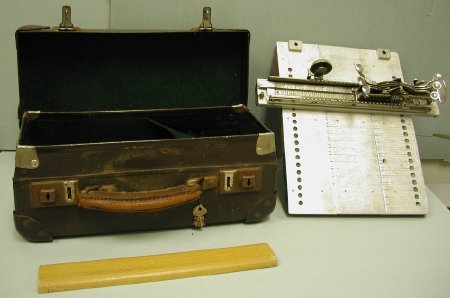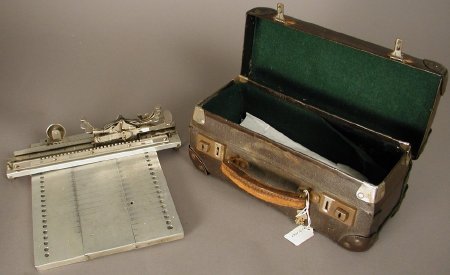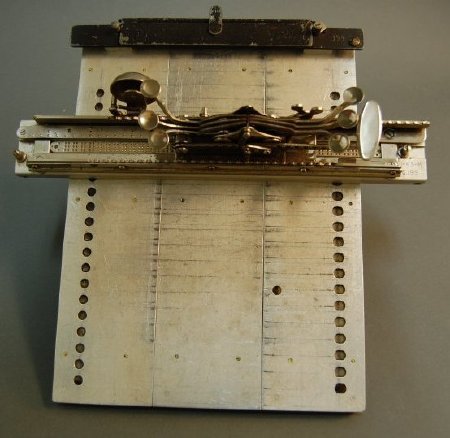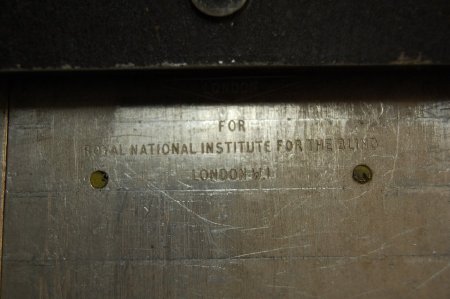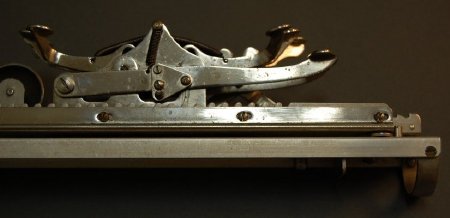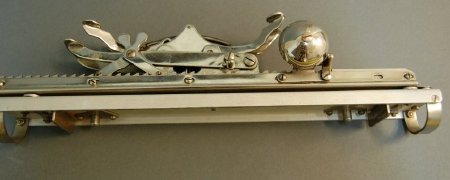Object ID:
2001.4.1a-2
Title:
Small Improved Stainsby Braille Writer
Description:
(.1a) Small Size Improved Stainsby Braille Writer; reverse key model, i.e. downward writing with six keys, three on each side of a carriage, that move right to left along a rail; key positions reversed as for writing with a slate (three keys on right, from top to bottom, are for dot positions 1, 2, and 3; three keys on left, from top to bottom, are for dot positions 4, 5, and 6); chrome-plated steel, aluminum base; pair of carriage release levers on right; bell on left indicates end of line; pegs at each end of writer base fit into the accompanying board; "R.K." is stamped on the top, lower left corner; "MK3-M, G.199" is stamped on the top, lower right corner; (.1b) board is made of aluminum and folds in two places vertically; 20 holes along both long sides to accommodate the braille writer, mounting holes on top for paper clamp; "J.M.G. Instruments Ltd., London, for Royal National Institute For The Blind, London, W.I." is stamped at the top center; red paper pad screwed to base; (.1c) wooden interpoint anti-sag ruler; (.2) carrying case has brown leatherette covering over fiberboard with brass reinforced corners, tinplate trim, and leather handle; hinged lid, two tinplate locks, green felt lining.
Dimensions:
H-5.25 W-12.5 D-5.25 inches
Date:
ca. 1970
Made by:
JMG Instruments Ltd.; Royal National Institute for the Blind
Place of Origin:
London
Provenance:
Henry Stainsby (1859-1925), Supt. of the Birmingham Royal Institution for the Blind, (later General Secretary of the British & Foreign Blind Association) along with Birmingham manufacturer Albert Wayne, introduced their portable brailler writer around 1903. An "improved" version, featuring aluminum parts and a paper clamp allowing accurate interpointing or interlining, was announced in "Outlook for the Blind" as early as 1927 and available generally by 1933 in the RNIB catalog. By 1978, RNIB sold the Improved Stainsby in a number of formats, including a large version available with interlining and interpointing board, and a small version with a folding board. Both large and small models came in ordinary and reverse keyed versions.
Credit Line:
Museum Purchase, 2001.4
